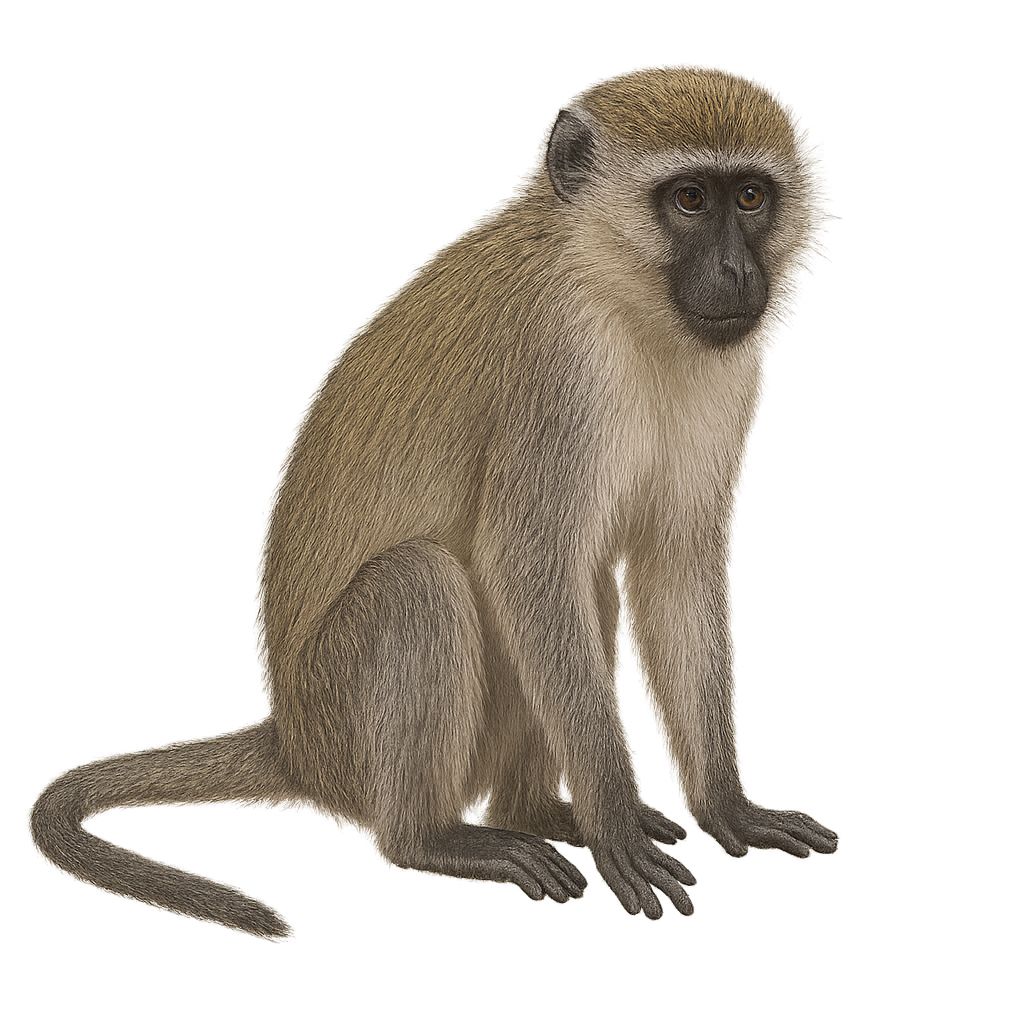Your wildlife photography guide.
Explore the vervet monkey in detail, study its behavior, prepare your shots.
Where to observe and photograph the vervet monkey in the wild
Learn where and when to spot the vervet monkey in the wild, how to identify the species based on distinctive features, and what natural environments it inhabits. The WildlifePhotographer app offers tailored photography tips that reflect the vervet monkey’s behavior, helping you capture better wildlife images. Explore the full species profile for key information including description, habitat, active periods, and approach techniques.
Vervet monkeys
Scientific name: Chlorocebus pygerythrus

IUCN Status: Least Concern
Family: CERCOPITHECIDAE
Group: Mammals
Sensitivity to human approach: Suspicious
Minimum approach distance: 10 m
Rut period: March to May
Gestation: 155-170 jours
Births: August to October
Habitat:
savannas, riverine forests, urban areas
Activity period :
Primarily active during the day, with peak activity in the morning and late afternoon.
Identification and description:
Chlorocebus pygerythrus, commonly known as the vervet monkey, is a medium-sized primate found primarily in sub-Saharan Africa. It is characterized by its grey-green fur, black face surrounded by white hair, and long, slender tail. These monkeys are highly adaptable and can inhabit a variety of environments, from savannas to riverine forests. They are known for their intelligence and ability to adapt to urban settings. Vervets live in complex social groups where hierarchy and communication play a crucial role. They are diurnal, spending most of the day foraging for food, which mainly consists of fruits, leaves, and insects.
Recommended lens:
400 mm – adjust based on distance, desired framing (portrait or habitat), and approach conditions.
Photography tips:
To photograph vervet monkeys, it is advisable to use a telephoto lens of at least 400mm to capture detailed images while respecting their space. As these monkeys are suspicious, it is important to remain discreet and avoid sudden movements. Opt for early morning or late afternoon hours to benefit from soft lighting. Vervets are often active and in groups, providing numerous opportunities to capture interesting social interactions. Be patient and ready to quickly adjust your settings to capture spontaneous moments.
The WildlifePhotographer App is coming soon!
Be the first to explore the best nature spots, track rutting seasons, log your observations, and observe more wildlife.
Already 1 430 wildlife lovers subscribed worldwide

